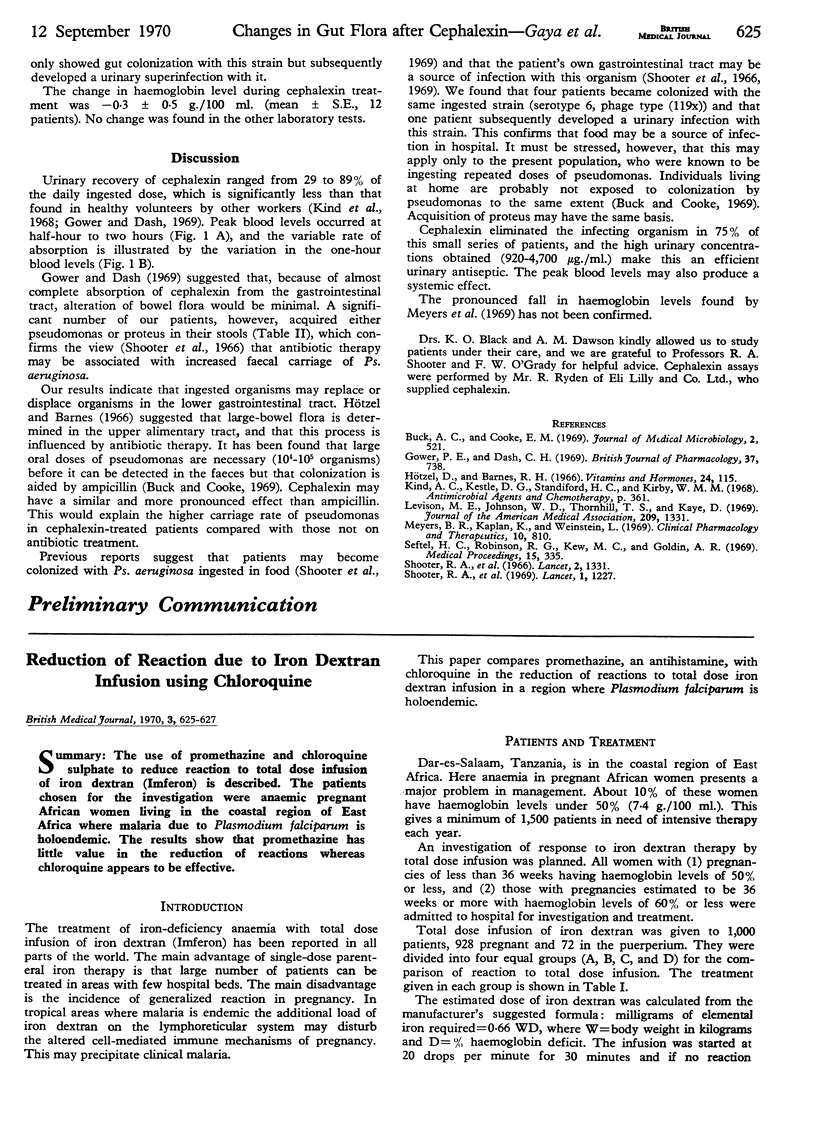Abstract
Eighteen patients with urinary tract infection were treated with cephalexin orally. Absorption was variable, between 29 and 89% of the total daily dose being excreted in the urine in 24 hours. A significant number of patients became faecal carriers of Pseudomonas aeruginosa compared with a control group who received no antibiotics. Four of the cephalexin-treated patients acquired a strain of Ps. aeruginosa known to be present in food from the hospital diet kitchen and one developed a urinary tract infection with this strain.
Full text
PDF

Selected References
These references are in PubMed. This may not be the complete list of references from this article.
- Gower P. E., Dash C. H. Cephalexin: human studies of absorption and excretion of a new cephalosporin antibiotic. Br J Pharmacol. 1969 Nov;37(3):738–747. doi: 10.1111/j.1476-5381.1969.tb08513.x. [DOI] [PMC free article] [PubMed] [Google Scholar]
- Kind A. C., Kestle D. G., Standiford H. C., Kirby W. M. Laboratory and clinical experience with cephalexin. Antimicrob Agents Chemother (Bethesda) 1968;8:361–365. [PubMed] [Google Scholar]
- Levison M. E., Johnson W. D., Thornhill T. S., Kaye D. Clinical and in vitro evaluation of cephalexin. A new orally administered cephalosporin antibiotic. JAMA. 1969 Sep 1;209(9):1331–1336. [PubMed] [Google Scholar]
- Meyers B. R., Kaplan K., Weinstein L. Cephalexin: microbiological effects and pharmacologic parameters in man. Clin Pharmacol Ther. 1969 Nov-Dec;10(6):810–816. doi: 10.1002/cpt1969106810. [DOI] [PubMed] [Google Scholar]
- Shooter R. A., Gaya H., Cooke E. M., Kumar P., Patel N., Parker M. T., Thom B. T., France D. R. Food and medicaments as possible sources of hospital strains of Pseudomonas aeruginosa. Lancet. 1969 Jun 21;1(7608):1227–1229. doi: 10.1016/s0140-6736(69)92114-x. [DOI] [PubMed] [Google Scholar]
- Shooter R. A., Walker K. A., Williams V. R., Horgan G. M., Parker M. T., Asheshov E. H., Bullimore J. F. Faecal carriage of Pseudomonas aeruginosa in hospital patients. Possible spread from patient to patient. Lancet. 1966 Dec 17;2(7477):1331–1334. doi: 10.1016/s0140-6736(66)92082-4. [DOI] [PubMed] [Google Scholar]


